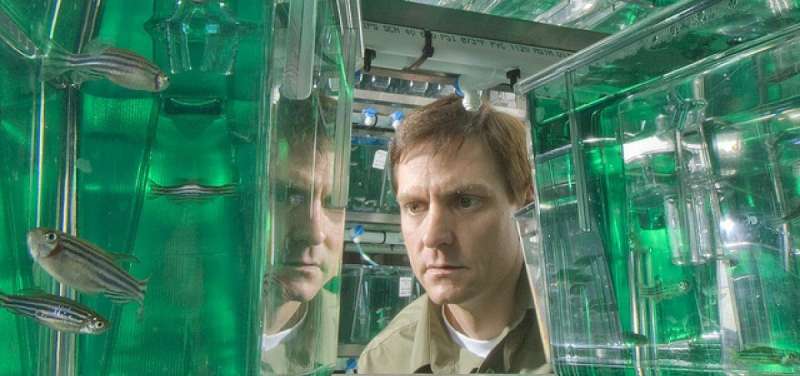Credit: Oregon State University
The discovery of a new gene in zebrafish could lead to a better understanding of how exposure to chemicals leads to disease in humans, according to a new Oregon State University study.
The National Institutes of Health-funded study, published in the journal Environmental Health Perspectives, describes the interaction between potentially toxic chemical compounds, a protein receptor and the newly discovered gene, known as slincR.
The discovery "puts a bunch of pins on the map" to try to explain human susceptibility to chemicals, said Robert Tanguay, a molecular toxicologist in OSU's College of Agricultural Sciences and corresponding author on the study.
In recent years, zebrafish have been found to be an excellent model for biomedical research because they reproduce rapidly, and their embryonic genetics and biological systems bear many similarities to humans.
"PAHs, dioxins, and PCBs contribute to adverse health effects in humans and wildlife, and many of these compounds interact with a specific receptor to cause toxicity," Tanguay said. "Humans and fish are exposed to these chemicals. In order for a chemical to cause any effect in vertebrates, it must first interact with this receptor. If we understand more about how these chemicals are interacting with this receptor and these genes, we will know more about how they may affect our health."
In addition to showing PAHs act as activators for the aryl hydrocarbon receptor (AHR) and slincR gene expression, the study confirms a relationship between slincR, a non-coding RNA, and sox9b, an important gene in human development.
"This new gene regulates the soxb9 gene, so now there's a possibility that these environmental contaminants that activate this receptor could be affecting developmental processes in people," Tanguay said. "We can now predict which of these types of compounds have to react with this receptor, causing downstream events."
Understanding the downstream effects of chemical exposure leads to a better understanding of toxicity-related disease states and could lead to improved interventional measures to protect susceptible people, said Tanguay, who directs both the Sinnhuber Aquatic Research Lab and the Superfund Research Program at OSU.
"Maybe there are 10 steps between chemical exposure and all the things that have to happen to get a birth defect," he said. "We can look at those 10 steps in people to see whether there are variations in susceptibility. That might explain why some people who get exposed to these compounds don't get sick and others do. It's not magic. It has to be encoded in the genome."
More information: Gloria R. Garcia et al, Signaling Events Downstream of AHR Activation That Contribute to Toxic Responses: The Functional Role of an AHR-Dependent Long Noncoding RNA ( slincR ) Using the Zebrafish Model, Environmental Health Perspectives (2018). DOI: 10.1289/EHP3281
Journal information: Environmental Health Perspectives
Provided by Oregon State University























